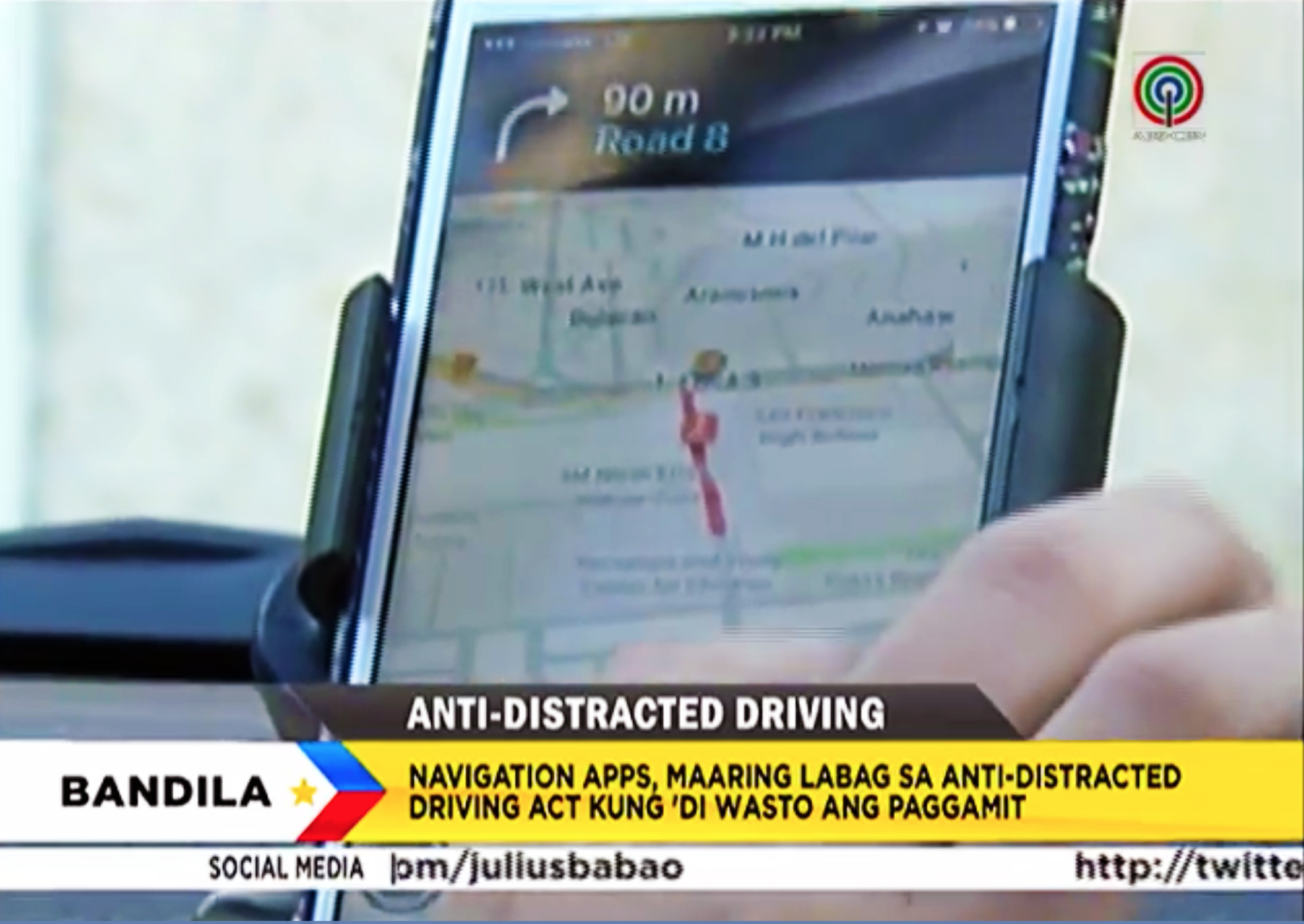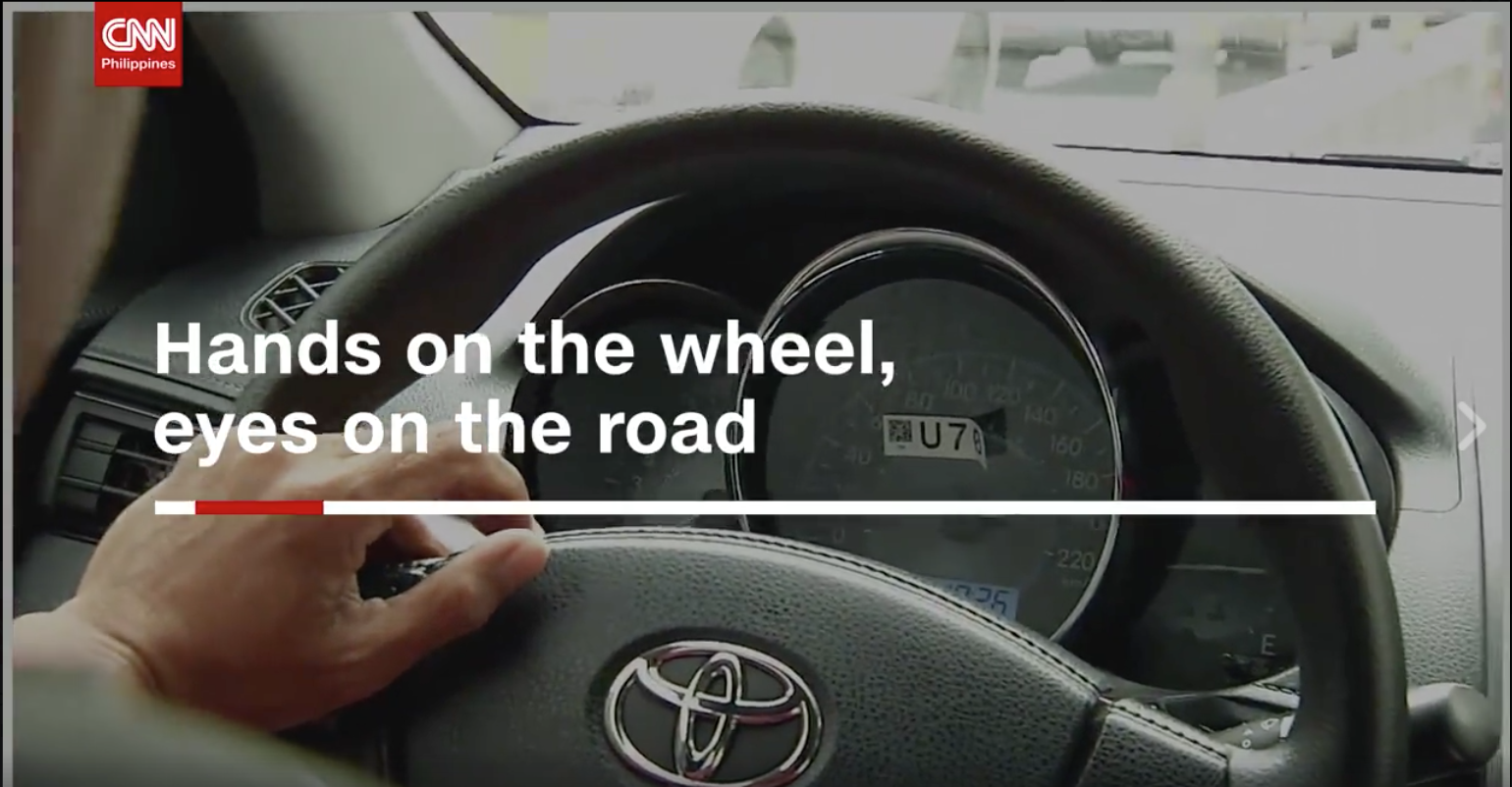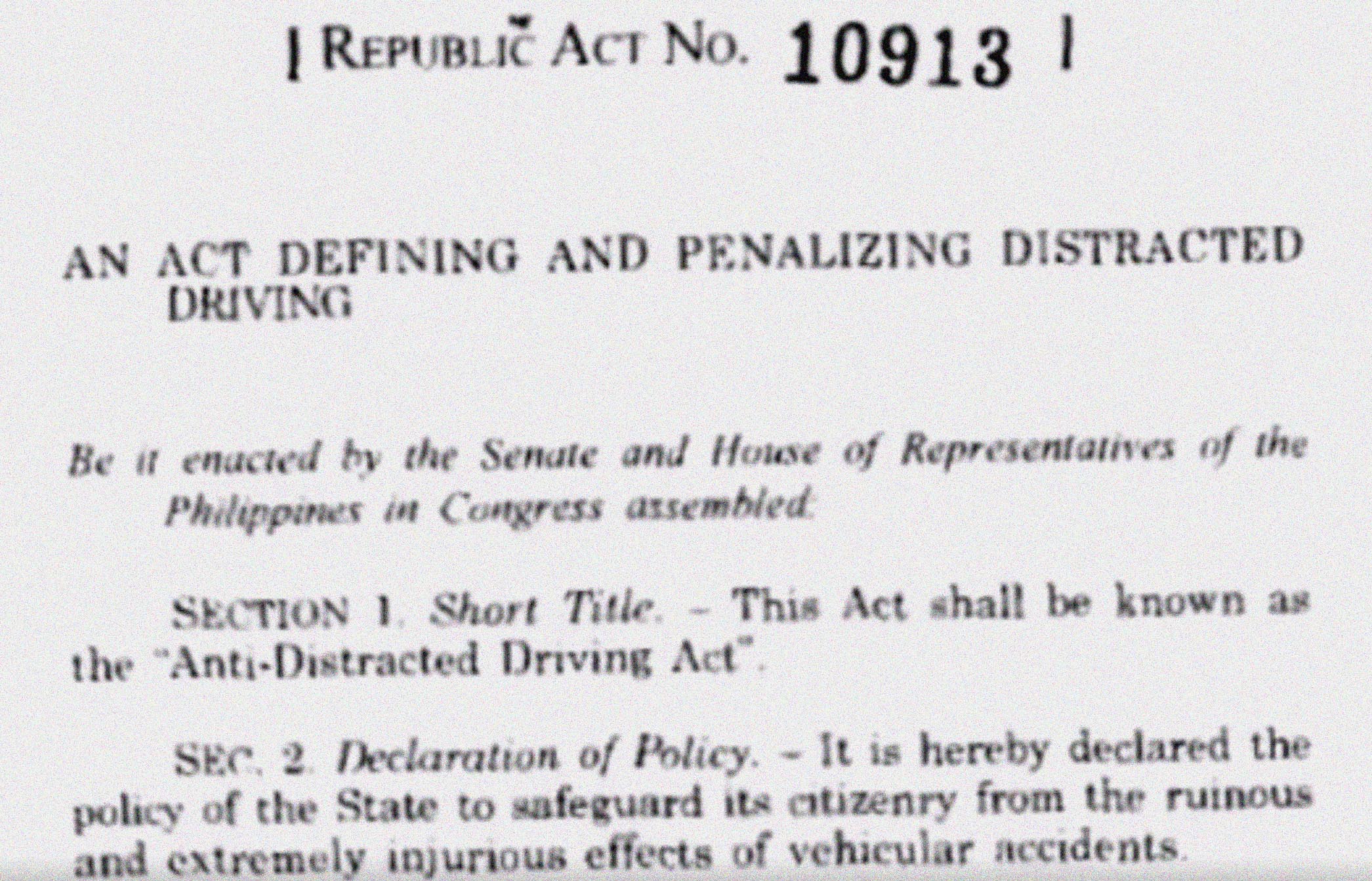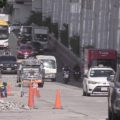The first day of implementation of the Anti-Distracted Driving law (RA 10913) yesterday was marred with confusion and confrontations between drivers and enforcers.
At least 70 public and private motorists were apprehended by the Metropolitan Manila Development Authority on the first day, most of them “texting” while stuck in traffic on EDSA, said MMDA spokeswoman Celine Pialago.
Under RA 10913, motorists are not allowed to use their mobile communication devices, electronic entertainment and computing gadgets or devices while vehicles are in motion or temporarily stopped at a traffic light or an intersection. It prohibits acts like making or receiving calls, writing, sending or reading text messages, playing games, watching movies, performing calculations, reading e-books, and browsing the internet.
Particularly confusing is the application of the “line of sight” rule.
Line of sight is defined by the Department of Transportation (DOTr) as the entire windshield, including the top visible area of the dashboard. This means devices directly mounted on the windshield or on top of the dashboard violate this rule. Devices mounted below this “line of sight” are allowed.
“It is way too subjective,” said motoring expert and road safety advocate James Deakin, referring to the provision as defined.
“I also find it safer to glance at a spot on my windscreen than somewhere on the console,” Deakin added.
This observation is similar to a study conducted by a Japanese car company on the effectiveness of heads-up displays (HUD) on cars. The internal confidential study produced in 2004 showed that information flashed on the screen or on the windshield is far safer because the distractions are less and eye movements off the road are reduced significantly.
“The law is unclear and if it is line of sight that is the issue, how about jeepneys and their signboards? Is this not a distraction and interference to line of sight?” said Ram Salome, a shuttle driver.
Uber driver Melchizedek Murc could not push a button on his smartphone after receiving a passenger along EDSA, fearing that the nearby traffic enforcer would apprehend him.
“It is still unclear what the violation is, but it was reported this morning that using a mobile device can result in a traffic ticket,” Murc said.
Lawyer Robby Consunji, former president of the Car Awards Group Inc. and a columnist for Top Gear Magazine, said the very implementation of the law is questionable.
“The IRR (implementing rules and regulations) is dated April 4 and was published on May 5. It was uploaded on the DOTr website on May 17 and made effective the next day,” Consunji told Malaya Business Insight.
“The power to do an information campaign (as stated in the IRR) arises only after its effectivity on May 18 for a period of three months,” he said.
“It is another ground to question the lack of notice to the affected public,” he added.
Consunji also asked if there is any verifiable data that show electronic devices are a leading cause of motor vehicle accidents in the Philippines.
Ariel Inton of the Lawyers for Commuters Safety and Protection (LCSP) said his group is all for the implementation of the law but the implementation must be clear and not rushed.
Transportation Assistant Secretary Mark de Leon said the law exempts motorists who are using their mobile phones in making or taking an emergency call or if they are reporting a crime or a prohibited act, accident, natural calamity, bomb threat, terrorist activities and the like.
The MMDA said of the 77 apprehended between 6 a.m. to 3 p.m. under the no-contact apprehension scheme, 47 were motorcycle riders, 19 private motorists, six truck drivers, and five public utility vehicle drivers.
The plate numbers of the vehicles will be forwarded to the Land Transportation Office to identify the vehicle owners. The MMDA will then send summonses to the violators and ask them to pay the P5,000 for the first offense.
Aside from public and private vehicles, the law also covers wheeled agricultural machineries, construction equipment, and other forms of conveyances such as bicycles, pedicabs, trolleys, “habal-habal,” “kuliglig,” wagons, carriages, and carts that may either be, human-powered or pulled by an animal, as long as the same are operated or driven in public highways or streets.
Motorists are allowed to use hands-free applications like Waze, Google Maps, and Spotify or gadgets like dash cams as long as these do not interfere their line of sight.
LTO chief Edgar Galvante said drivers with cellphones mounted near the rear-view mirror will be apprehended.
He said it is a preventive measure to avoid or lessen road crashes and injuries. It also promotes road safety and responsible driving among motorists.
MMDA data show an average of 262 crashes daily or 11 crashes per hour in the metropolis. Last year, the agency recorded 109,322 road crashes in the metropolis but its database does not include statistics on distracted driving.
The LTO has deputized members of the PNP-Highway Patrol Group, Metropolitan Manila Development Authority traffic enforcers, and local traffic constables to implement the law.
Violators will pay a fine of P10,000 for the second offense and P15,000 for the third offense with a three-month suspension of driver’s license.
Operators and owners of public utility vehicles and commercial vehicles are also liable if their drivers violate the law.
This story, first published at Malaya Business Insight, is produced under the Bloomberg Initiative Global Road Safety Media Fellowship implemented by the World Health Organization, the Department of Transportation and VERA Files.




